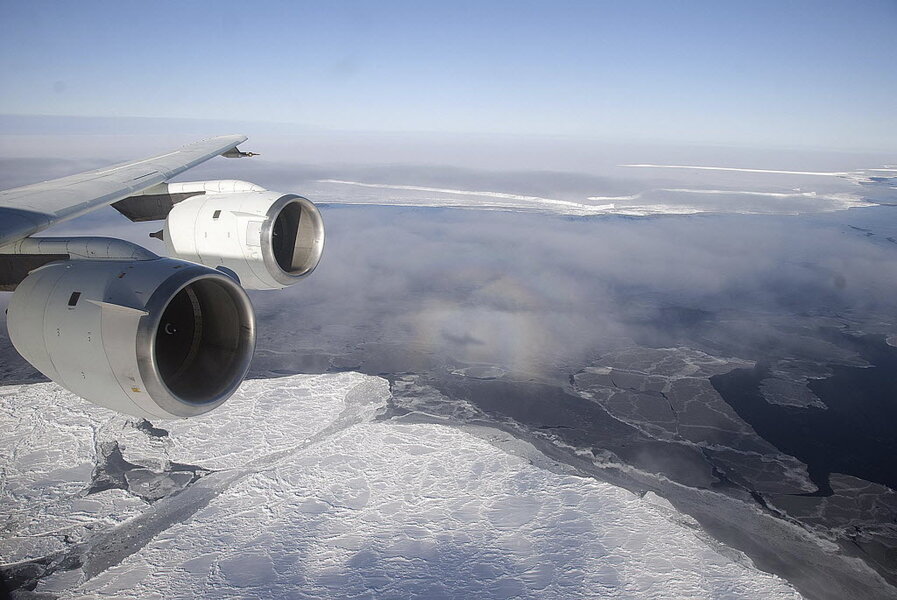Ice-shelf melting seen to accelerate in West Antarctica
New research out of NASA’s Jet Propulsion Laboratory and the University of California, Irvine has found evidence that several Antarctic ice shelves, which are extremely sensitive to temperature changes in the water, are being melted from below by ocean waters heated by global warming.
The study, which was published Tuesday in the journal Nature Communications, concluded that the cause of much of lost ice from the Smith, Pope, and Kohler glaciers, which flow into the Dotson and Crosson ice shelves, came from below.
While the glaciers sit on bedrock, a portion overflows into the sea, forming a floating ice shelf. The point of where the glacier begins to float is called the grounding line, and changing grounding lines, a result of ice melt, are thought to be strongly linked to the overall mass loss from the continent.
"Our observations provide a crucial piece of evidence to support that suspicion, as they directly reveal the intensity of ice melting at the bottom of the glaciers during that period," Ala Khazendar, a researcher with NASA’s Jet Propulsion Laboratory, said in a UC Irvine press release.
The study, which focused on glaciers in western Antarctica, where ice is melting faster than anywhere else on the continent, was conducted by measuring the thickness of the ice, and its height relative to the water. Radar data was used to assess the bottom of the glaciers, while laser measurements measured the surface elevation, allowing the researchers to calculate the thickness of the ice.
These methods allowed the research team to calculate the difference between the grounding lines in 2002 and 2014. While previous studies suggested that the Dotson and Crosson ice shelves were melting by about 40 feet per year, Dr. Khazendar's data said otherwise. The Smith glacier lost up to 230 feet per year between 2002 and 2009, a period of particularly rapid ice melting in the Amundsen Sea.
Meanwhile, the melting rates of the Pope and Kohler glaciers have decreased in the past few years due to a slight decrease in warm water reaching Antarctica between 2009 and 2014.
"If I had been using data from only one instrument, I wouldn't have believed what I was looking at, because the thinning was so large," Khazendar said in the press release, adding that both techniques consistently measured the same level of ice loss.
As the glaciers melt, more of their surface area is left exposed to the warm water underneath, which in turn pushes the grounding line further inland, creating a self-perpetuating cycle that is "unstable," as Khazendar told NPR.
"More sections of the glacier become thinner and float, meaning that the grounding line continues retreating, and so on," Khazendar said.
While understanding how ice shelves are changing is vital to predicting how much sea levels will rise in the future, many questions remain unanswered and require further research.
It is still unclear whether other glaciers in West Antarctica will follow in the path of Smith and melt significantly, or if they will show signs of stabilizing, like Pope and Kohler. According to Khazendar, more information about the bedrock at the grounding line of each glacier and data on ocean circulation and temperatures will help inform further research and predict how sea level rise and ocean warming will affect the glaciers in the future.







